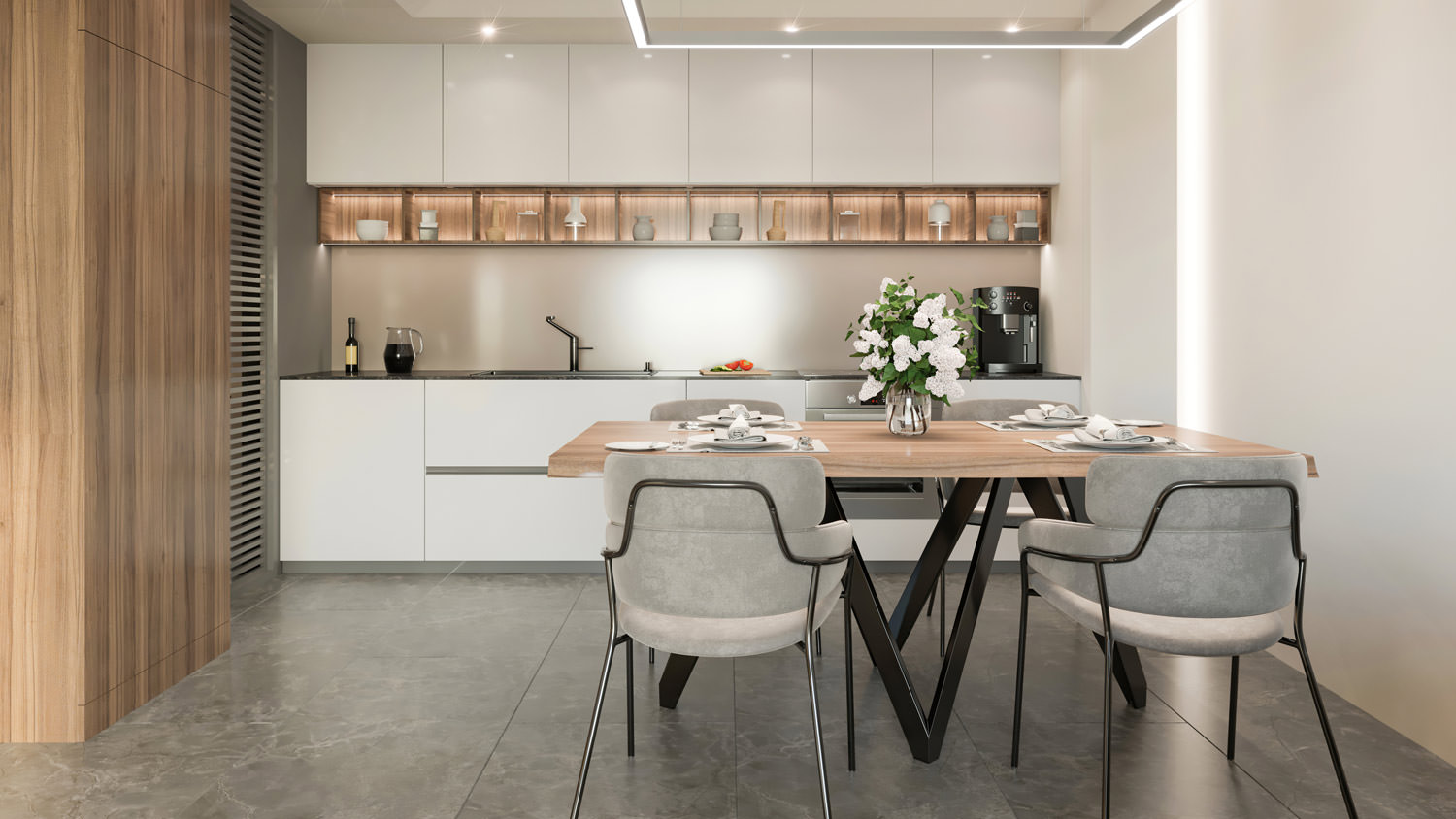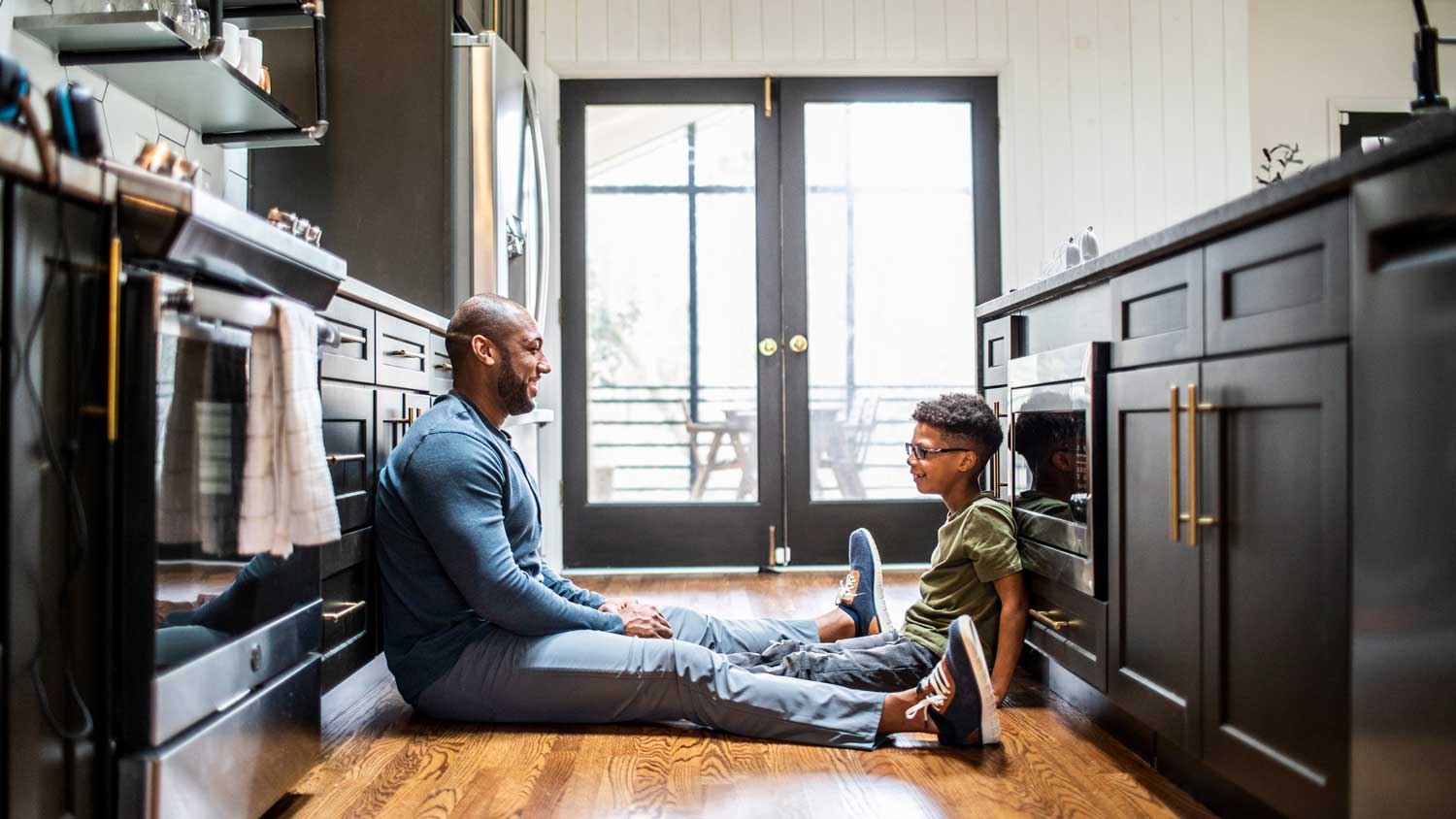
Staining concrete floors can add a little something to a drab slab. Learn more about how much stained concrete floors cost and what factors impact it.
Achieve the perfect baseboard application and put the finishing touch on your room renovation


Baseboards help keep your room looking finished and balanced
Use construction adhesive or nails to attach baseboards
Nailing baseboards can keep them straighter and free from warping over time
Gluing your baseboards can take much less time and effort
Whether you’re building a new home addition or renovating an existing room, baseboards are an often overlooked but important part of the room’s overall finish and style. Trim can also help improve your home’s resale value. One question you’ll need to answer is how to attach the baseboards to your walls. You can choose nailing, gluing, or both, but which makes more sense for you and your home? Fortunately, we’ve gathered the pros and cons of each to help you decide.
When taking on this project, expect questions only a pro can answer. With our network of local pros, you'll get the job done and your questions answered—without the hassle and stress of doing it yourself.

While some homeowners choose to glue baseboards to their respective walls, many home remodeling pros use nails. Let’s look at why.
Depending on the weather and humidity in your area and the age of your home’s construction, baseboards can warp, flex, or detach over time. You might want to select nails over glue for your baseboard project because nails are more effective at keeping the baseboards secured, straight, and free from warping. The result is that your rooms maintain that solid finish and look for years to come.
Nailing your baseboards can also make it easier to remove them later. Removing glued-on baseboards can damage the wood or even result in splits and cracks, depending on the strength and age of the adhesive.
The biggest drawback to using nails to secure baseboards to your home’s walls is the difficulty of completing the job accurately. Nail guns can simplify installation but are tricky to handle if you’ve never used one.
Nailing also requires more focus and precision. If you let your attention wander for even a moment, you can accidentally wind up with crooked nails or misaligned boards.
You’ll also need to sand and paint over the nails for the best aesthetic results. These extra steps will prolong the project's completion time.

Nails might be the more common choice for baseboards, but construction-grade adhesives can save time and effort. For busy homeowners and contractors, that can be incredibly appealing. Here are the other pros and cons of gluing baseboards.
It’s easier to glue baseboards to the wall than to nail them. That’s especially true if the baseboard is less than 4 inches in height and not very thick or if the room itself is on the small side. And when you use the right adhesive and apply it properly, your baseboards will stay securely fastened.
Unless you use a high-quality adhesive and enough of it, you could wind up with baseboards that don’t stay where you want them to. This can make the entire room look shabby and poorly put together.
You’ll also need to double-check your measurements to ensure your baseboards are properly sized. Otherwise, if there’s an error, you might have difficulty removing and repositioning them.

When it comes to putting the finishing touch on your home’s rooms, baseboards shouldn’t just be an afterthought. Some projects may require both nails and glue to achieve the best results. But how do nails and glue compare to each other in terms of the basic factors that are most important to homeowners?
When done carefully, gluing and nailing your baseboards can both result in an attractive, finished look. Nailing does require a few extra steps to achieve that finish, whereas gluing simply requires applying the adhesive and holding the baseboard in place for a few minutes until it dries.
Most Attractive: Tie, though nailing requires more effort
Generally speaking, nails tend to last longer than adhesive. However, that’s not always true, especially when you choose a construction adhesive specifically made for holding wood baseboards to the wall.
Most Durable: Nailing
Because nailing baseboards to the walls generally takes longer and requires more labor, you’ll usually pay more for a contractor who attaches your boards with nails instead of adhesive.
Most Affordable: Gluing (mostly due to labor costs)
Unless you have substantial construction experience, you’ll probably find it easier to use glue to attach your baseboards. Nailing requires the use of a nail gun or hammer, precision skills, and two extra steps (sanding and painting) to make sure the boards look finished.
Easiest to DIY: Gluing
If your baseboard gets damaged in the future, you’ll most likely need to remove and replace that section. Construction adhesive can be long-lasting and hard to remove, sometimes damaging surrounding sections or the wall itself. Nailed-on boards are generally simpler to remove, making the repair process quicker and easier.
Easiest to Repair: Nailing
The cost to install baseboards ranges from $800 on the low end to $2,250 on the high end, with an average price of $1,100. Your exact cost will depend on several factors, including the size of the installation area, the type and style of the baseboard, and the cost of painting or staining. If you need the old baseboard removed first, you can expect to pay between $50 and $100 per hour in labor costs. And if your walls are damaged, you may need to budget an additional $300 to $900 for drywall repair.
Baseboard installation can be a DIY project if you have the time and skills to take it on. Completing this project yourself saves you money on labor, meaning your only cost will be materials. However, bear in mind that this project can take a couple of full days to complete, and you need to be able to cut and measure precisely if you want a professional finish. You may also need to pay to rent tools if you don’t already own them, which can add to the cost.
Hiring a pro is the costlier option, but you’re guaranteed a professional finish—plus, trusting the job to a pro takes the stress off you. A professional baseboard installer near you has the experience and supplies to complete this job correctly, and if any accidental damage occurs, your pro’s insurance will help pay for repairs.
From average costs to expert advice, get all the answers you need to get your job done.

Staining concrete floors can add a little something to a drab slab. Learn more about how much stained concrete floors cost and what factors impact it.

Updated flooring can make any room in your home feel brand new. Find out flooring installation costs, from materials to labor costs.

Your floors deal with a lot, and they may occasionally experience damage that requires your attention. Learn floor repair costs for your project.

Installing flooring yourself can save you money and give you a sense of pride. Learn about the easiest flooring to install and when to choose each type.

Updated flooring can make any room in your home feel brand new. Explore flooring installation costs in Columbus, OH, from materials to labor costs.

Floor joists are an important part of your flooring system. Learn more about what a floor joist is, what it does, and when to repair it.